When beginning Google Ads, it’s crucial to determine the budget you can allocate to ad spend. Too little, and your campaign can be ineffective or allocate it incorrectly, and you’ll reduce your return on investment.
Online retailers frequently ask us questions like ‘How much do I really have to spend to start advertising on Google?’ or ‘To increase sales, how do I calculate the budget I need to start with on Google Ads?’. This blog post will answer these questions and explain the most efficient and effective process to define your initial Google Ads budget.
Google Ads test phase: achieving sufficient clicks for your budget
An important requirement for establishing consistent and successful Google advertising campaigns is acquiring sufficient results data in the short term. But this means receiving as many clicks as possible during a learning or test phase.
Analyzing the data received during this period will be an invaluable guide to understanding which keywords and budget are the most effective to increase your sales sustainably.
Crucially, this learning phase will provide a clear idea of how much you should spend over the next months and the sales return you’ll receive. How long you need for the learning phase depends upon the volume of traffic divided across the number of products or product types in your range. A test phase is more about the volume of clicks you receive rather than time, but typically this could be one to three months.
You need as much traffic as possible per keyword but should also include as many relevant keywords as possible. This means winning enough traffic to qualify each keyword and know its true value.
For example, if you have from one to 12 products, a month’s worth of traffic at around 1,000 clicks or more could be a sufficient volume for an accurate analysis. Alternatively, if you have tens of products or more promoted by many keywords, that will appeal to many different ways of searching online. For this reason, you’ll need a higher traffic volume for each keyword to receive a statistically valid sample of clicks.
Estimating your required budget: using the Google Keyword Planner
Your budget will be dependent on your keyword choice, the number of clicks these keywords receive, and the cost of each click on these keywords. A great place to start is by using Google’s Keyword Planner, which helps you come up with ideas on which keywords to use, how many clicks they will receive and the rough cost.
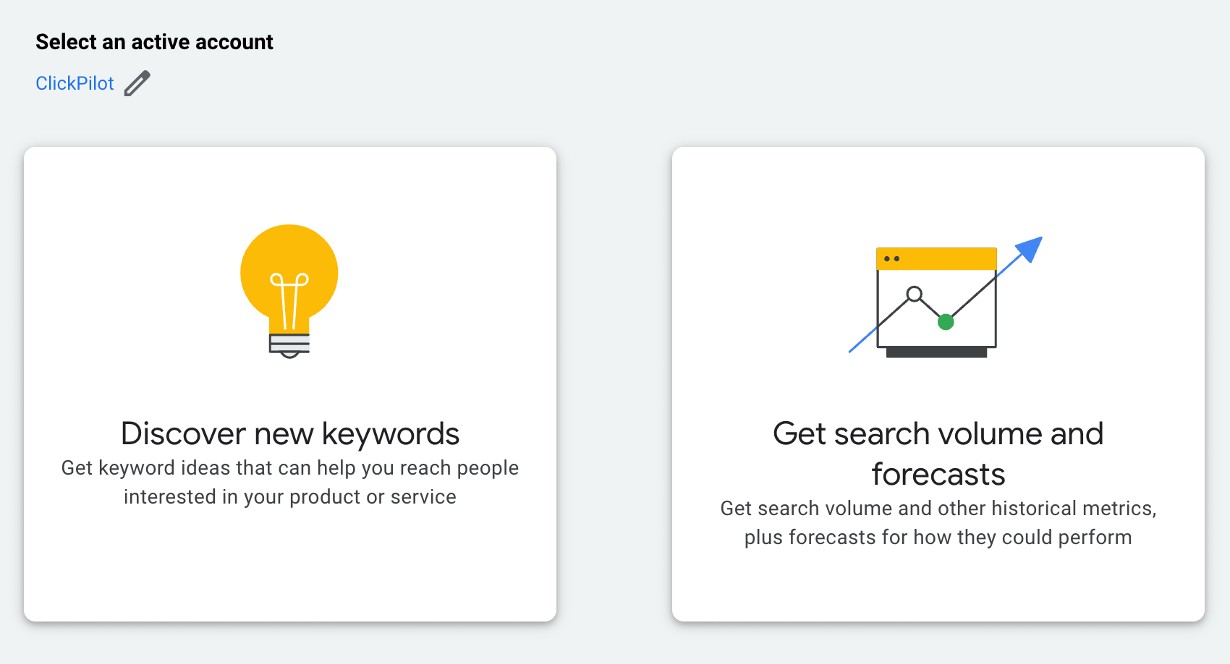
In the Google Keyword Planner, Select Discover new keywords and enter up to 10 keywords - these could be those from your existing website, subjects in your market, or those used in competitor ads and websites. If you have a large website with many product ranges, you may have to break this down and work through section by section. From the few keywords entered, Google will provide additional suggestions for you to view, as per the image below.
Alternatively, you can enter your website domain as the basis for keyword suggestions. While it’s useful to compare results between the two, results based on your domain can vary and are very much down to the content on your website and Google’s ability to read it.
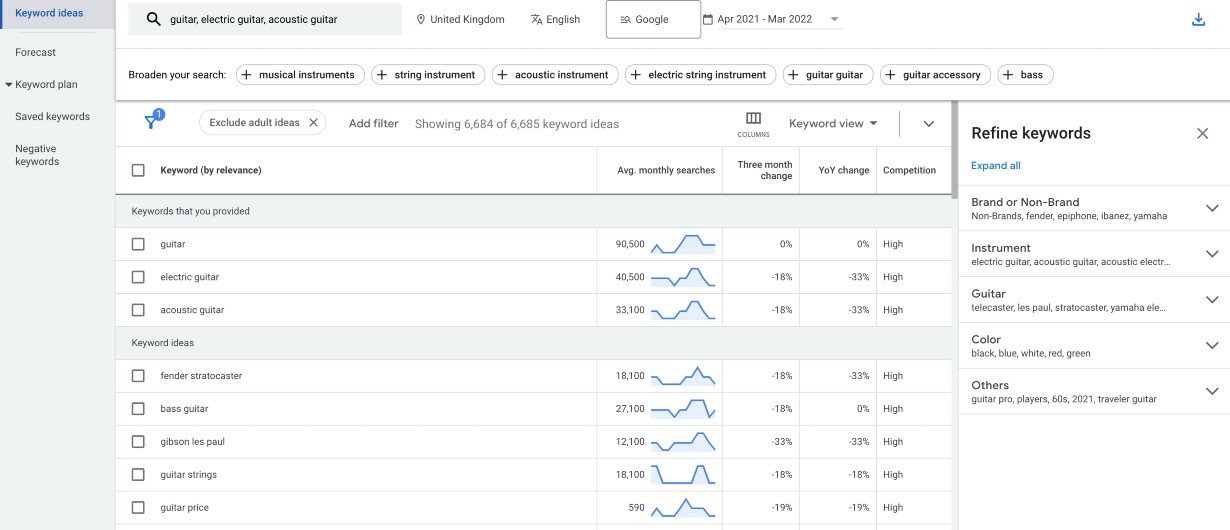
By adjusting location targeting options and maximum bid, you should know the number of clicks your keywords will receive and their potential cost.
As you can see from the results, the Google Keyword Planner will provide an indication of average monthly searches for the keywords you input, as well as the expected cost per click as a low and high range.
It will also suggest additional keywords related to your search, displayed under Keyword Ideas, and an invitation to Broaden Your Search with additional keywords, which Google will use to provide additional suggestions. The Refine Keywords tool also makes it possible to create a more detailed search, for example, by adding brand names or product types, and helps to group your keywords for easier review. By looking through the keyword ideas, you can select those you feel you’d like to compete for within your campaigns.
Still, within Google’s Keyword Planner, you can then use Keyword Forecasts to drill down into more detail to help you select the right keywords from the initial suggestions. As shown below, this tool displays the number of clicks each keyword will likely receive for the recommended budget and the average cost per click.
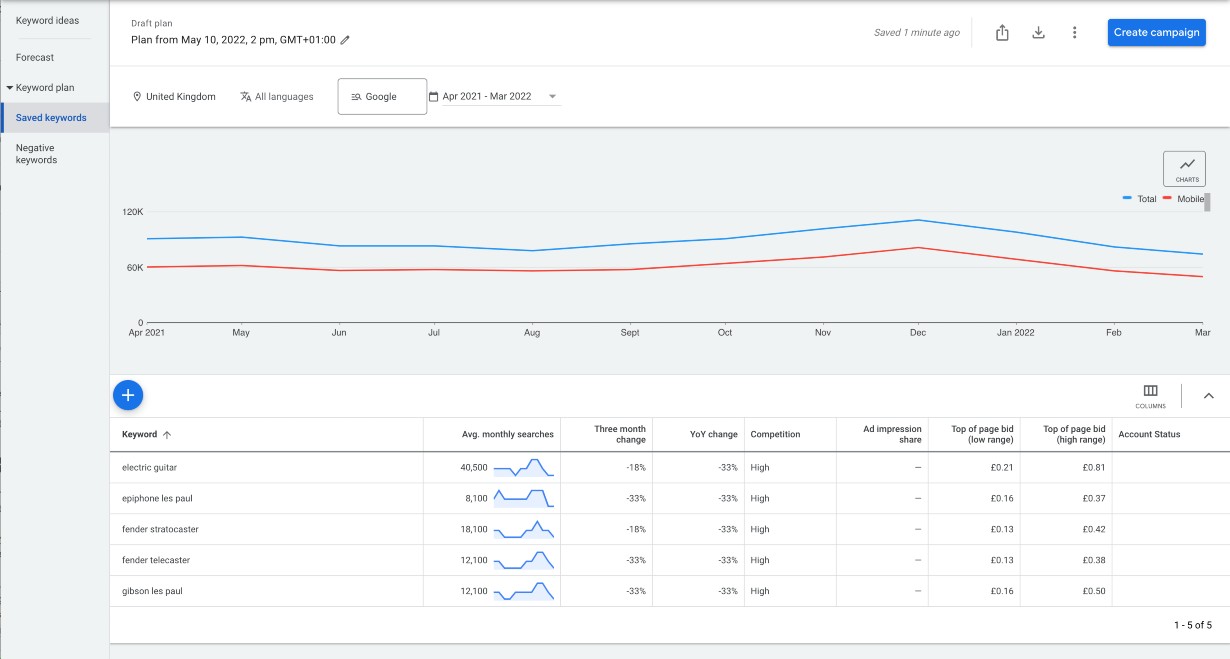
By adjusting location targeting options and maximum bid, you should get an idea of the number of clicks your keywords will receive and their potential cost.

Free Report
Spot Errors, See Strategies,
Our Free Report Reveals Key E-Commerce Fixes.
Book Your Call
Why budgeting too low for Google Ads is a problem
1. A low budget will restrict the volume of traffic you need
You need a sufficient amount of traffic to understand which keywords and budget are most effective. If you don’t budget enough, you won’t get the traffic you need to analyse.
For example, if you plan to budget £300 per month for Google Ads, divide that amount by 30.4. Google sets the budget daily and provides the figure of 30.4 as the average number of days per month. In this case, the daily rate would be £9.86 per day.
Depending on the value of the keywords you intend to bid on, this amount per day may be sufficient. However, if the cost per click is £3, you can only get three clicks per day - a wholly insufficient result - because your budget will generally be capped at the daily threshold of £9.86.
In this case, Google may not even be able to spend your budget because it’s too low daily.
2. Your ads may not be displayed
Forecasted results are based on Google’s recommended average daily budget. This is an estimated amount of spend for your average daily budget that would allow your ads to appear.
Spend below this amount, and the impression share - the number of times your ads appear - will likely drop. Spend significantly less, and your ads may not show at all.
3. A low budget will prevent you from accessing your desired keywords
If your budget is too low for your desired keywords, your bids will be unsuccessful. Instead of spending your budget on keywords most likely to attract your target customers, the budget may be allocated to lower-priority keywords.
In a recent example, a customer explained that they had previously tried Google Ads but without success. They were selling their own-manufactured product online and understood that they needed as much traffic as possible in the learning phase.
The customer allocated a budget of less than £500 for the initial month. Because keyword auction is based on how much you’re willing to bid per click, keywords which generate higher revenue tend to have a higher bid cost.
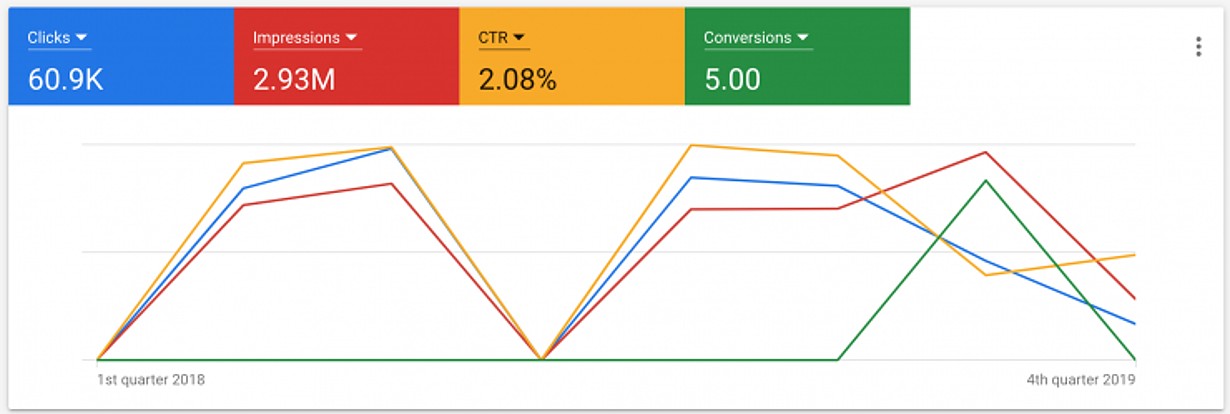
With a low budget, the customer had unintentionally placed a cap on their bid per click. This resulted in them missing out on their desired keywords to competitors who could bid higher.
Instead, the Google Ads budget was allocated to a larger number of lower-value keywords. This resulted in many clicks but a poor corresponding sales result. Why?
Google Ads: the importance of Conversion
Combined with securing a sufficient volume of clicks, you need to secure conversions. Conversions, in the case of a retailer, are the clicks on your ad which lead to the desired outcome, and in most cases, this means sales.
Bidding on keywords which could be as cheap as 5p per click, could secure thousands of clicks for a relatively low cost. However, if the clicks don’t correspond to product sales, they’re useless. Relevant traffic comes from clicks on keywords, which leads to sales, frequently meaning keywords with relatively higher costs per click.

Getting Started With
Performance Max
Download Our Step-by-step guide to getting started with Performance Max Shopping Campaigns for your Shopify Store
GET YOUR FREE EBOOKFREE EBOOK
A Google Ad must: include high-value keywords
A natural inclination when planning your initial budget is to avoid expensive keywords because they’ll burn your budget in no time. However, they’re expensive for a reason: if a keyword costs £5 per click, it’s because its bid value has been pushed up at auction.
Other competing advertisers want these keywords because a click is more likely to lead to a sale. A budget which is too low will not allow you to bid high enough to reach the most likely sales-generating keywords.
Google Adwords can give you accurate conversion rate data throughout your learning phase. If you already have an estimation of your conversion rate before you begin Google Ads, you can enter this into the Keyword Planner’s Forecast, and Google will provide an estimation of expected sales relative to clicks.
From here, you’ll be able to calculate your ROI (return on investment), considering your ad spend, estimated sales value and profit.
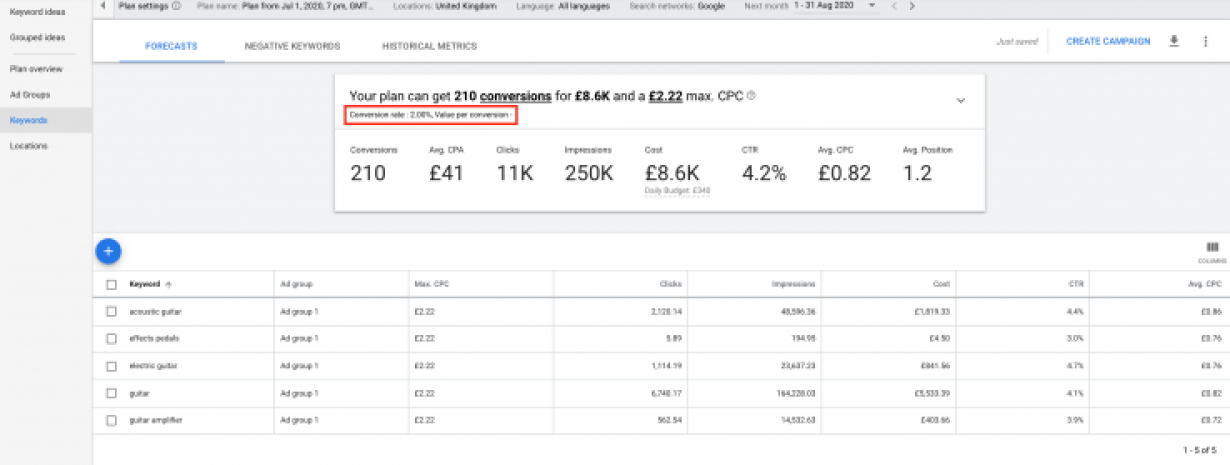
What makes a high-conversion keyword?
Products themselves have different conversion rates. For example, a specific type of mountain bike in excess of £3,000 will likely have a far lower conversion rate than a specific kitchen utensil costing a few pounds.
Many people may click on the expensive mountain bike to browse or research it, but fewer would be as likely to purchase it. A less expensive but equally specific item, like a branded kitchen utensil, is less of a purchase risk and more likely to be purchased quickly and without extra stages of research, so conversion rates could be higher.
A product with a very strong brand and of a specific type, like a limited edition top-brand pair of trainers, could have a high conversion rate. This is because somebody will search for the pair of trainers by knowing exactly what they are looking for and, crucially, with the intention to buy.
Alternatively, a generic search, such as ‘black running shoes’, will return far less specific results. The searcher will then have to determine various additional factors such as male or female, adults or children, size and brand. Consequently, the conversion rate of the keyword ‘black running shoes’ will be far lower.
Cost per sale and return on ad spend matter - not cost per click
Sticking with the above example doesn’t mean that ‘black running shoes' isn’t a good keyword to bid for because enough keyword clicks at the right price could lead to a beneficial sale cost. However, the cost per click of ‘black running shoes’ would have to be sufficiently low to be considered for inclusion with the aim of increasing direct sales.
Ultimately, it comes down to a good cost per conversion or revenue generated vs the amount spent. This is achieved with either a low amount of clicks on a high conversion rate, high-cost keyword or a high amount of clicks on a low conversion rate, low-cost keyword.
Your converted traffic might be in the higher-cost or lower-cost range. Ultimately, only testing will definitively answer which keywords are the most successful.
You need enough clicks to discover which keywords convert
The average e-commerce conversion rate is around 2%. Therefore on average, you need 100 clicks to achieve two sales. Reality doesn’t always follow a linear pattern, and each and every keyword will have a different conversion rate, so even if you can achieve the average conversion rate with all things being equal, you may receive no sales from your first 200 clicks but eight converted sales from 400 clicks.
This explains why you need a minimum number of clicks to achieve sufficient converted sales from which you can draw conclusions. It also shows why the more data you have during the test phase, the greater the potential of finding out the most successful keywords for your business.
On the other hand, too few clicks can result in too little statistical significance data to accurately represent which keywords are successful and which aren’t. Neither would it confirm that Google Ads doesn’t work for your business or market. Instead, it would likely show a learning phase budget inadequate to determine the success or failure of Google Ads as a business growth mechanism.
The volume of traffic acquired over the learning phase will give a much clearer idea of which keywords and bids are successful and why and which are not. It should also provide sufficient data to show whether Google Ads are right for your business.
You don’t have to spend big on Google Ads at the outset
It isn’t the case that you have to be able to dedicate thousands of pounds to make Google Ads worthwhile, either in the test phase or long term. The crucial metric isn’t total spending but total profit. If you spent several thousand pounds per month but received that amount back plus more in sales revenue, you would agree that it was a beneficial investment, and you would likely want to increase the spending should the potential clicks be there.
Of course, there are no guarantees on your sales return from Google Ads. However, data can be acquired at each stage at a cost you’re willing to commit to, which confirms the relative success with minimal risk.
This is a level of sales result from analytics that no other form of sales or marketing can match.
Need assistance with your Google Ads budget?
We can advise you further through the detail of budgeting your own Google Advertising campaign.
Call us on 01743 612 001 or Contact Us.

Book A Discovery Call
Looking for tailor-made PPC strategies? Our team is here to help you maximize your online store's potential. Book a discovery call with us for personalised insights and solutions.
Book Your Free ConsultationBook Your Call